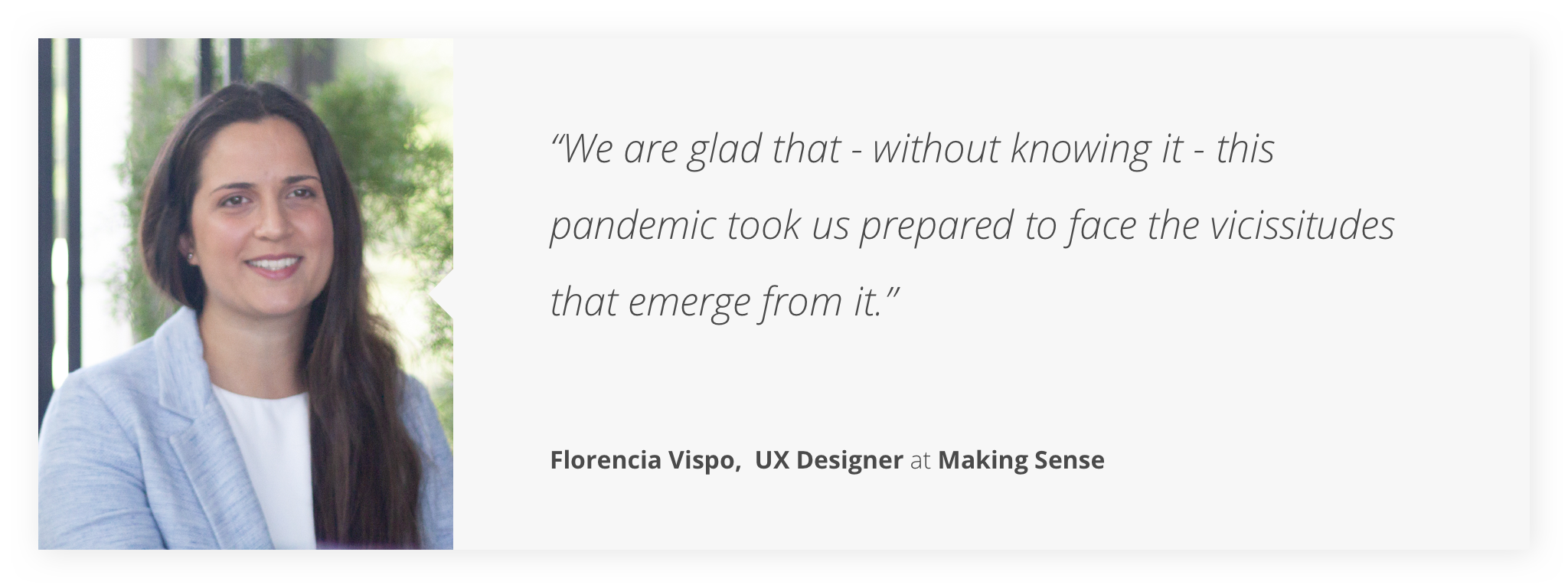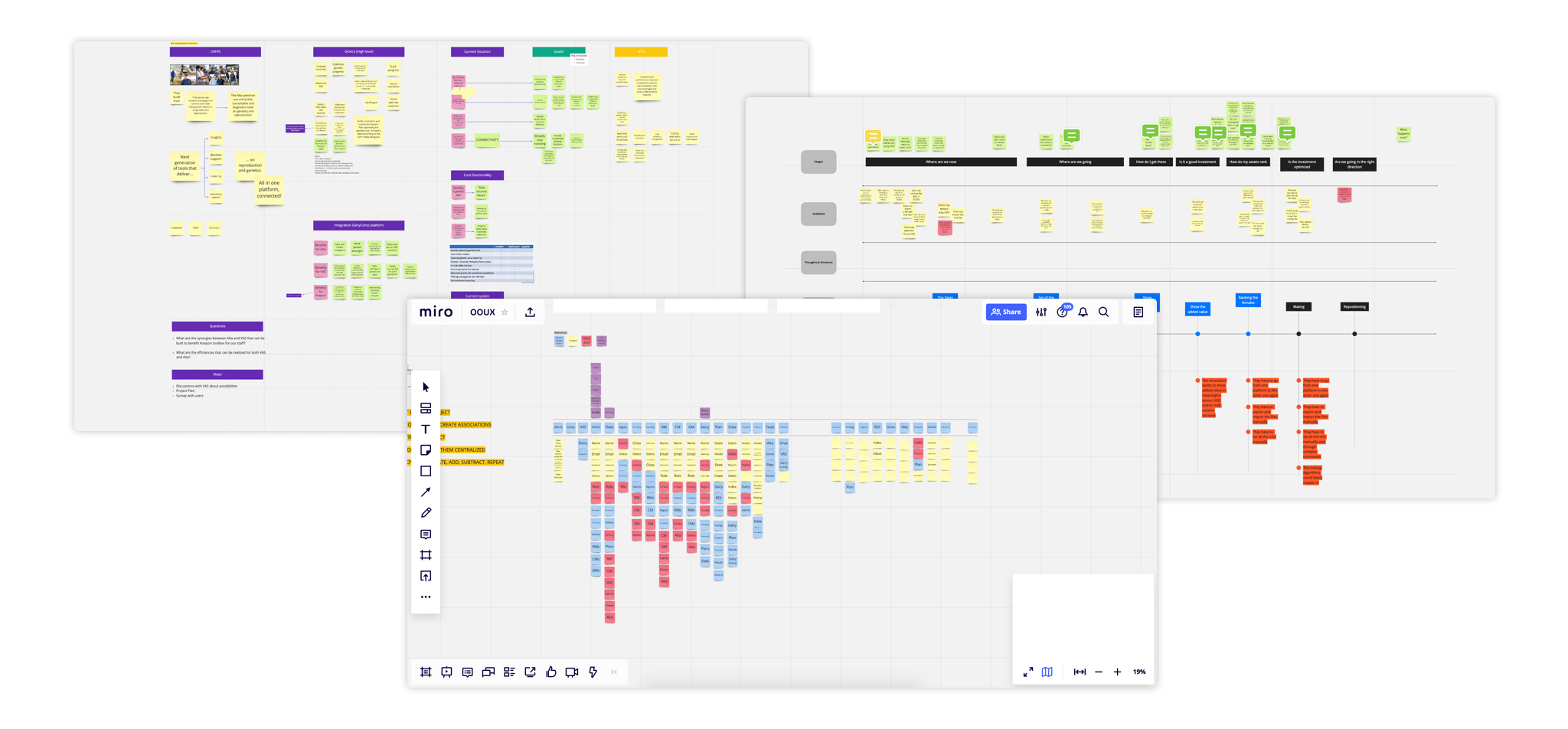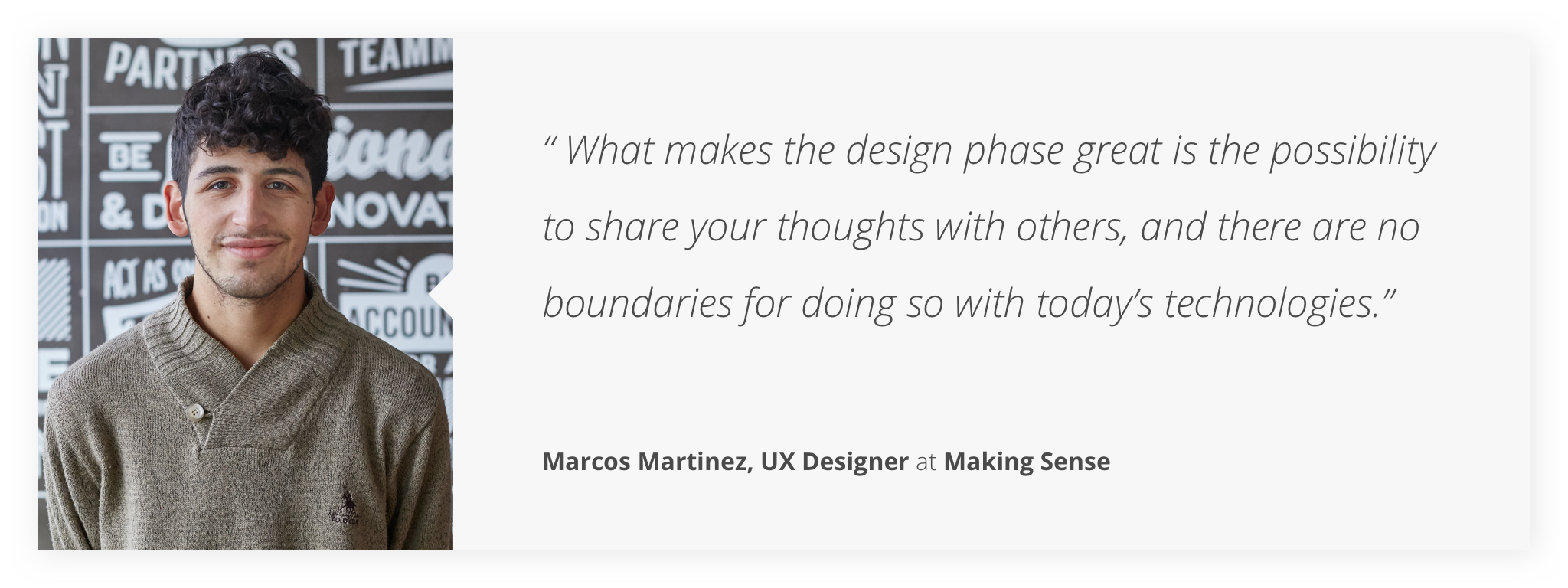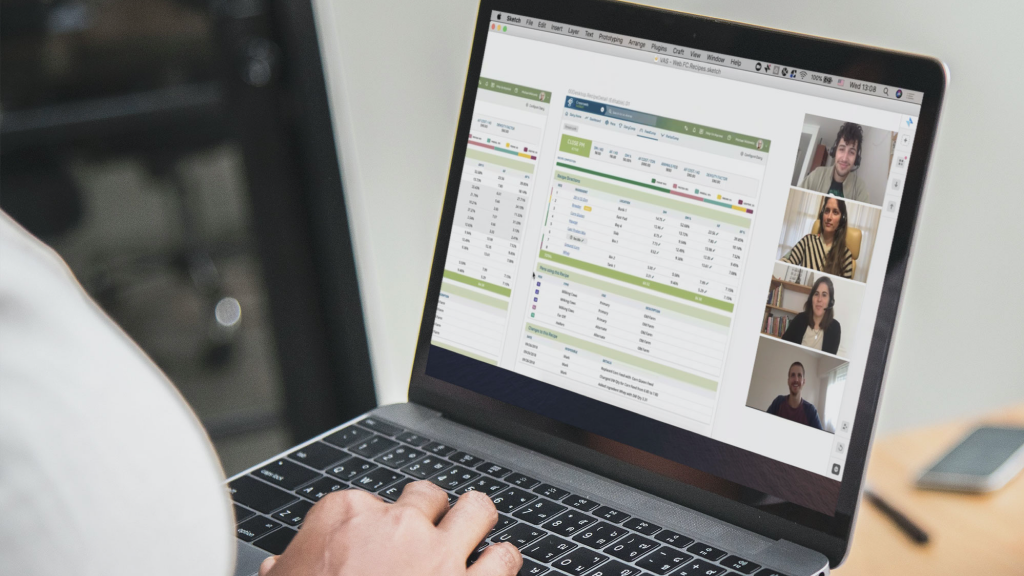We have written many articles about distributed teams, what remote work means for us, and everything related to team performance working remotely. Due to our team configuration, we’ve been developing and improving our work methods across the years and it is our desire to share with everyone out there how we approach remote work, especially in design teams.
A challenging time
COVID-19 is impacting the way we work and forced many to quickly implement remote work. If you are one of these, don’t panic. It could be an opportunity to improve your processes, the way you collaborate and bring people closer together despite physical distances.
In design teams, collaboration is key and how we can promote it, even when we are not working physically together, is what matters the most. So it’s important to build and shape processes and relationships that allow us to stay close, as if we are working in the same room because even with the restrictions, working remotely innovation can happen.
Beyond the boundaries of an office building
Successful collaboration still depends on trust, good communication, and the presence of varying perspectives and ways to exchange ideas. These all are possible in remote environments. The difference remains in the tools you need to implement collaboration and how your processes are likely to adopt those tools.
A process not dependent on co-location
Since our founding, we have been improving the way people work remotely, achieving much-appreciated results, and shaping a culture that works.
These efforts have provided us the opportunity to develop processes that are perfect for the remote work environment where collaboration flows.
To help you further understand what I’m getting at, I’ve asked some of the UX team members, the team I lead, to describe what our design process looks like.
So, here’s the first step:
Research and analysis
Let’s see from Florencia Vispo’s – one of our UX Designer- perspectives, how we can drive a research stage in a remote way:
In many cases, we work in remote teams. We even work with clients remotely. This way of working has provided us with tools to stay connected, work as a solid team, and achieve our goals.

There is a certain intrinsic value to working “in context” which is undeniable. Doing research with our stakeholders and users sharing a physical space has an extra dose of understanding. So how do we do it now we’re not able to be in the same room?
At the start of a project (and during it), we need to collect a lot of information to have an understanding of the current situation, needs and potential. For this, we organize Zoom meetings with our clients and stakeholders, and carry out in-depth interviews with practically the same ease that we would have by being next to each other.
Sharing collaborative work boards is incredibly useful – in our case we chose Miro, which is my favorite. Through these boards we develop work sessions aligning our approach, collaboratively participating, adding and organizing information without anyone being left out. Everybody can do this at the same time, just we jump into Miro and put our hands together to work.
We also use well-known tools such as Google Forms to do quantitative surveys. Reaching our users is not difficult as long as they have internet access. We have even taken online courses at certified sites to train us in specific content related to our project, in order to reach a high level of knowledge to properly understand the users and conduct effective research.
It is incredible how many tools we have at our disposal. With all of them at hand, it just takes some creativity to find new ways to apply them and achieve our goal of gathering information.

Ideation
Before an idea comes alive, we must ideate what it will look like. So, here Macarena López and Martin Deniro, both UX Designers, explain how we drive this phase in a remote work environment.
The main goal here is to make sharing and communicating ideas fast and accessible as possible. For that reason, we use a collaborative whiteboard such as Miro and, like over the whole process, Zoom to share and iterate our ideas. We chose these tools because they are simple, accessible, and allow real-time collaboration in brainstorming, sketching, wireframing, and other ideation activities.

Design
Once the ideation phase is completed, we’re ready to move toward the next phase: the design stage. At this point, Marcos Martinez – UX Designer – explains how a design step looks like when the team is working remotely.
We start to apply visual design to those wireframes and insights we’ve gathered from feedback sessions.
Here we actively work in a collaborative way with the UX project team holding periodic meetings to discuss other members’ work and to contribute with ideas from different perspectives. In order to make that happen, and having in mind that sometimes more than one designer is working in the same design, we have in our toolkit concepts like Design Libraries and Versioned Files.

The first one helps us to have consistency across all the designs we deliver since the Versioning of files (with tools like Plant) gives us the possibility to work on the same files without compromising other member’s work.
Stakeholders are also involved in this phase, participating in their product decisions, so we work with tools that enable us that kind of interaction, using Zoom/Slack/Hangouts to have meetings or delivering testable prototypes to better express the experiences we’ve been through.

Testing and validation
So far, we have been gathering information about the users, stakeholders, and competitors. These data we gathered have allowed us to go through the ideation and design stages. Now it is time to test and validate these prototypes we have been envisioning and crafting — to find out if they make sense for users and stakeholders.
In this step, stakeholder thoughts, user feedback – and user interactions with the product if we are working on a new feature or a current one – are crucial.
But before testing, we have to work on designing prototypes and workflows. For this, we employ tools such as Invision and Miro to help us simulate real experiences that can be tested with the users by just facilitating remote tests using video calls apps that support screen sharing, like Zoom. It’s this information that provides vital insights for us to iterate designs.

For us, current users’ experiences are a key resource for creating innovative and user-centered products, as are today’s technologies, which allow us to perfectly work with one another in a remote setting.
Remote work is a good thing – it boosts diversity, promotes creativity, supports a work-life balance, and allows us to achieve great outcomes. But it’s also a hard thing.
In light of the fact that many of you are struggling with remote work, we hope this article helps you to overcome the challenges you are facing. It’s our desire to help one another by sharing our knowledge and the practices we have been embracing for many years now.
